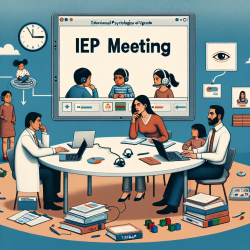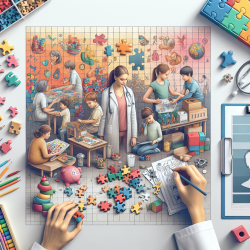As professionals dedicated to supporting the communication needs of diverse populations, it's crucial to continually refine our skills and expand our knowledge base, especially when it comes to working with aging individuals. The research article "Human Communication and the Aging Process" by Carl W. Carmichael, Carl H. Botan, and Robert Hawkins offers valuable insights into the multifaceted aspects of communication affected by aging. This comprehensive review aims to provide practitioners with actionable strategies to enhance their professional practice by implementing the outcomes presented in the research or by encouraging further exploration into this critical area.
The aging process brings about various physiological changes that can significantly impact an individual's ability to communicate effectively. These changes include alterations in speech, hearing, and cognitive abilities, which can pose challenges not only for the aging individuals themselves but also for those who work with them. Understanding these changes is the first step toward providing effective support and intervention.
Key Insights from the Research
- Physiological Changes: The research highlights the normal physiological changes associated with aging, such as declines in hearing sensitivity, vocal strength, and cognitive processing speeds. Recognizing these changes is essential for tailoring communication strategies that accommodate the unique needs of older adults.
- Impact of Neuropathologies: Conditions such as aphasia, dysarthrias, and dementias are more prevalent in older populations. The article reviews how these conditions affect communication and offers guidance on adapting therapeutic approaches to better serve individuals with these diagnoses.
- Ageism in Communication: The research addresses the issue of ageism and its impact on communication with older adults. It encourages practitioners to foster an environment of respect and understanding, eliminating stereotypes and biases that may hinder effective communication.
- Non-Verbal Communication: The importance of non-verbal cues in communication with aging individuals is emphasized. As verbal abilities may decline, non-verbal communication becomes increasingly significant. Practitioners are urged to develop skills in interpreting and utilizing non-verbal cues to enhance interaction.
- Intergenerational Communication: Promoting effective communication across generations is crucial for the social well-being of older adults. The research offers strategies for bridging communication gaps between older adults and younger individuals, facilitating more meaningful exchanges.
Implementing Research Outcomes in Practice
To translate these insights into practice, practitioners can adopt several strategies:
- Continuing Education: Engage in professional development opportunities that focus on geriatric care and communication disorders in aging populations. This could include attending workshops, webinars, and conferences specifically designed for speech-language pathologists and other professionals working with older adults.
- Interdisciplinary Collaboration: Work closely with other healthcare professionals to provide holistic care for aging individuals. This includes sharing knowledge and strategies with occupational therapists, audiologists, and geriatricians to address the multifaceted needs of older adults comprehensively.
- Adapt Communication Techniques: Modify communication approaches to accommodate the sensory and cognitive changes associated with aging. This may involve speaking more slowly, using simpler language, or incorporating visual aids to support understanding.
- Advocate for Age-Friendly Environments: Advocate for changes in both the physical and social environments of older adults to facilitate better communication. This could involve recommending modifications to living spaces to reduce background noise or training caregivers and family members in effective communication strategies.
- Encourage Social Engagement: Facilitate opportunities for older adults to engage in social activities that promote communication and interaction. This not only supports their communication skills but also contributes to their overall quality of life.
By incorporating the findings from "Human Communication and the Aging Process" into our professional practices, we can significantly enhance the support we provide to aging individuals. It's our responsibility as practitioners to stay informed about the latest research and to continuously seek ways to improve our skills for the benefit of those we serve.
To further explore these insights and strategies, I encourage my fellow practitioners to delve into the original research. Understanding the complex interplay between communication and aging is essential for developing effective interventions and support systems for older adults. Human Communication and the Aging Process.










